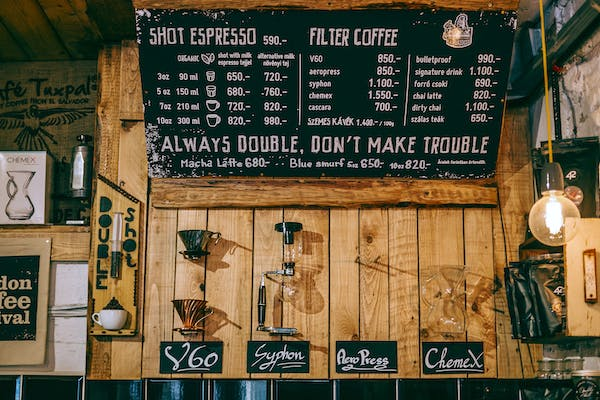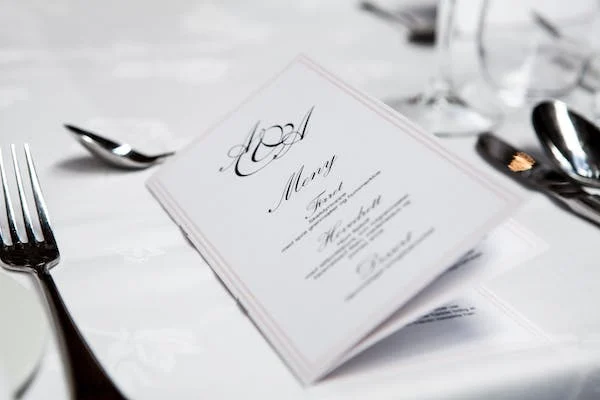Close your eyes for a mere minute and try to imagine this scenario. You walk into a high-end restaurant renowned for its incredible food and ambiance with high expectations. That is until the waiter hands you the menu. If the waiter hands you a wrinkled piece of paper containing hundreds of items, clustered text, and no color palette, you are bound to be disappointed. A menu undoubtedly leaves a lasting impression on a customer. A well-designed restaurant menu using online software like Vista Create can change the way you do business and bring in a lot more customers than you’d have expected.

While a customer’s interaction with a menu may be short, it plays a crucial role in their overall experience at your restaurant. Ultimately, it can impact the annual profit you can generate. While designing a menu, you must ensure that it accurately represents your restaurant’s personality, flows with the trends, and keeps your brand fresh in a consumer’s mind. In this article, we look at why menus play a pivotal role in the restaurant industry. So, a menu:
1 – Serves As an Effective Marketing Tool
A restaurant’s menu is undoubtedly an essential internal marketing tool and can be incredibly powerful if designed well. Think about it – every customer visiting your restaurant will 100% read the menu. Once the customer grabs it, the way you design it ultimately influences what and how much they will order.
The right design of your restaurant’s menu must connect with your customer and accurately showcase your brand. However, to ensure that your menu markets your restaurant effectively, you must be willing to review analytics frequently. By doing so, you can filter out the best-selling items and create multiple similar variations of the items, and generate more sales. Additionally, after determining which items generate fewer sales, you may remove them from your menu.
While it is true that you can not control a customer’s ultimate decision, a properly designed menu can influence their decision and direct them toward certain items, ultimately increasing the likelihood of those items being ordered.
2 – Sets the Theme
The driving force behind a well-designed menu is never the printer you use or the quality of paper. It is always the restaurant owner who is responsible for designing it. The creative mastermind behind the design must be able to represent what their brand stands for, the dishes they sell, the prices and the overall theme of their restaurant within a single pamphlet.
Whether it is a local diner or a five-star restaurant, the owner should put themselves into the shoes of a prospective customer and think like them. A menu needs to be designed from the perspective of the demographic that the restaurant wishes to attract. The goal must always be to appeal to the customers. The finest way of achieving this is to focus on the color palette, fonts, descriptions, effective use of white space and more.
Numerous restaurants often have a theme they wish to follow. For instance, a few restaurants prefer to focus on games and fun and target the younger audience. In this scenario, it would be wisest if their menu is designed using bright and vibrant colors ideal for children. On the other hand, some high-end restaurants focus on prestige and prefer a luxurious feel to their menus.

3 – Communicates With Customers
A menu must connect with customers, especially if it is their first visit. A good menu must leave a lasting first impression on customers and allow them to form expectations about the food they order. The descriptions are of utmost importance here.
A menu must include a bit of history about the food and should offer sufficient information about the available options. By doing so, customers can make an informed decision. For instance, information like whether the dish is hot, cold, sweet, or sour and if it contains any allergens must be included to avoid disruptions.
Additionally, a menu must highlight the variety of dishes that customers can choose from. At the end of the day, we all have different taste buds and have our preferences. A well-designed menu must include the qualities of each dish to ensure that customers make an informed decision and do not regret placing an order.
Conclusion
One must never overlook the importance of menus in the restaurant industry. Success depends on how the owner designs the menu. A menu serves as an effective marketing tool, sets the theme for your restaurant, and communicates your standards and what you have to offer to the customers. Therefore, an owner must be willing to put in sufficient research and effort when planning the menu.

